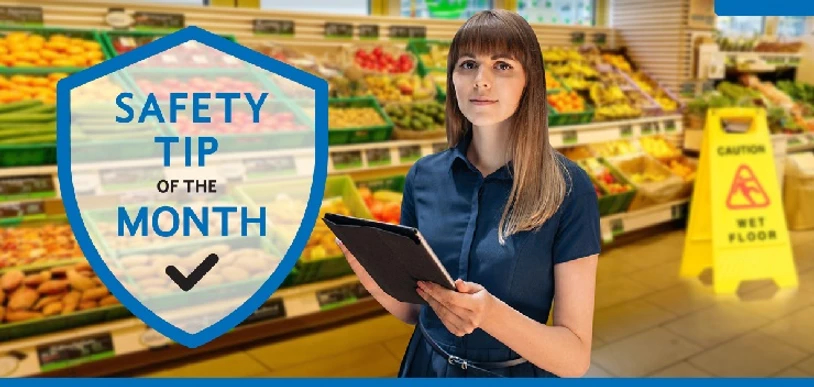What happens if there are coffee beans spilled in your aisle and a customer slips and falls and sues you for negligence? Are you guilty if you didn’t know the coffee beans were there?
Unfortunately, ignorance isn’t always a good excuse. If someone trips and falls because of a hazard on your property, you may try to defend your business by claiming there was a lack of notice of a dangerous condition – in other words, you didn’t know the hazard was there and therefore couldn’t react to it. However, this defense might not work, especially if you should have known about the danger.
To defend your company against these types of claims, you need to prove that you’re fulfilling your duties and taking reasonable care to keep your store safe all the time. One reliable way to do this is through the meticulous use of sweep logs.
The Importance of Regular Inspections
Grocery stores are especially prone to trip and slip hazards. Produce, flowers and other items can drip water on the floor, and customers can drop or spill items while they shop. At the same time, walkways need to be kept clear of crates, merchandise, hoses and other trip hazards.
To avoid incidents, it’s important to keep a close eye on the premises. Routine checks can catch hazards before anyone gets hurt.
The Importance of Record Keeping
Unfortunately, not all incidents can be prevented. Even if you are diligent about inspections, it’s possible that someone will fall, suffer injuries and sue your store. If that happens, the thoroughness of your inspections may be called into question.
That’s why doing regular inspections isn’t enough. You also need to keep a record of your inspections with sweep logs.
Sweep Log Best Practices
- Inspections should be conducted on a regular schedule. In areas where spills are more likely, more frequent inspections may be needed.
- Inspections must be recorded in a sweep log consistently. A gap in your sweep log could leave you vulnerable to a lawsuit.
- Electronic or paper sweep logs may be used. However, electronic logs can offer the benefits of time stamps and the option to include photos.
- Sweep logs should include each area checked, the condition, the actions taken, the date and time and the employee.
- The manager should inspect the sweep log regularly to make sure it is being completed meticulously.
Instantly download our Sweep Log Safety Tip Sheet here and review the tips with your team frequently.
Grocery stores face many unique risks. That’s why you need a partner who understands your business. Contact RiskPoint’s grocery team:
| Joe Scarpello | Melissa Johnson |
| 253.444.5584 | 253.444.5654 |


